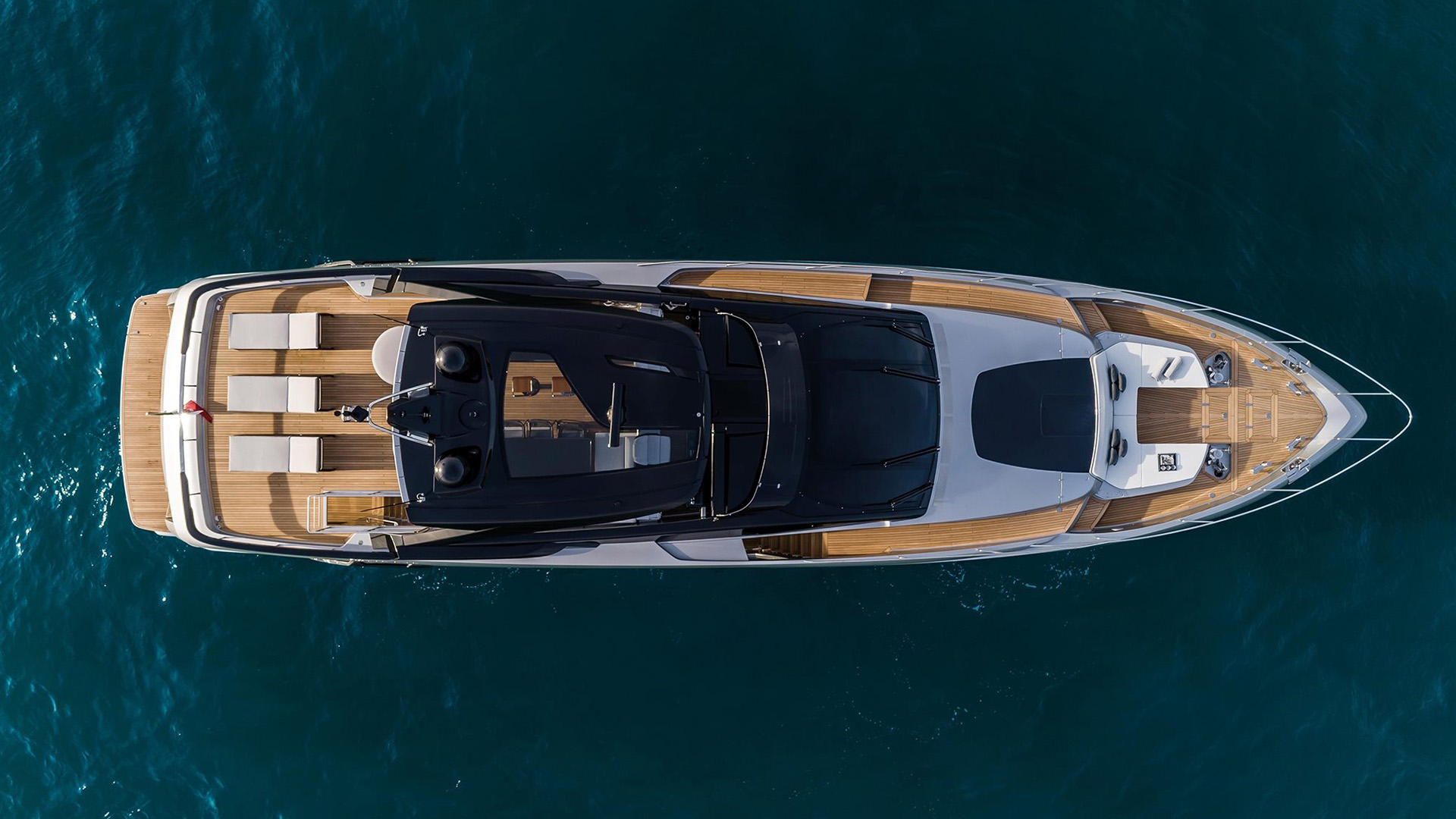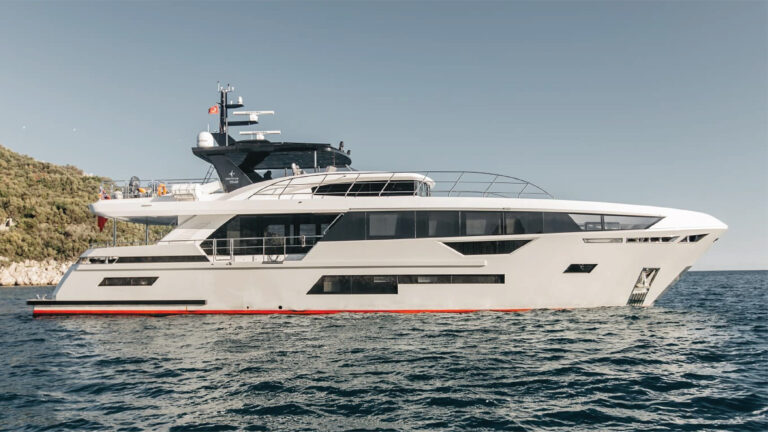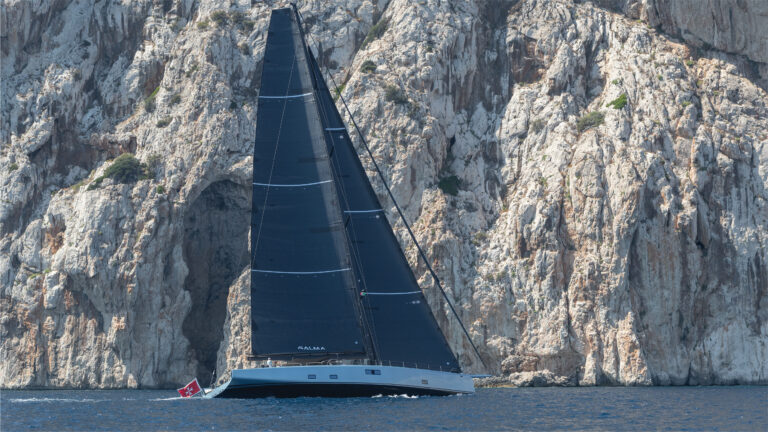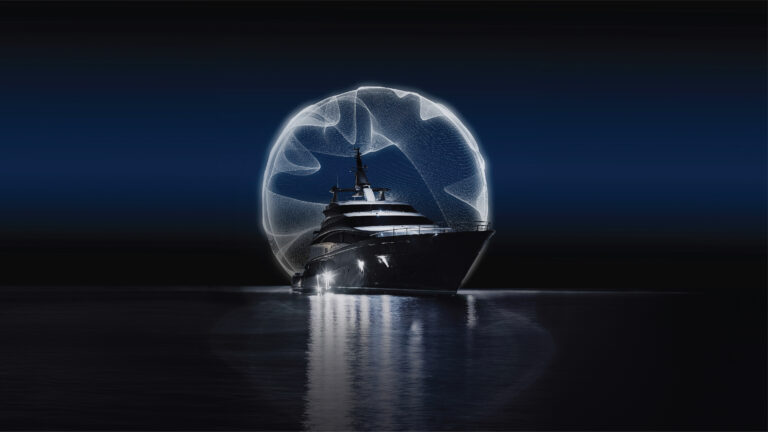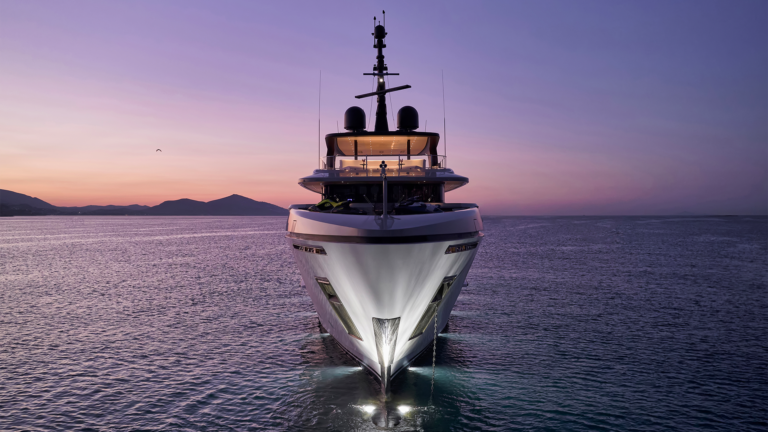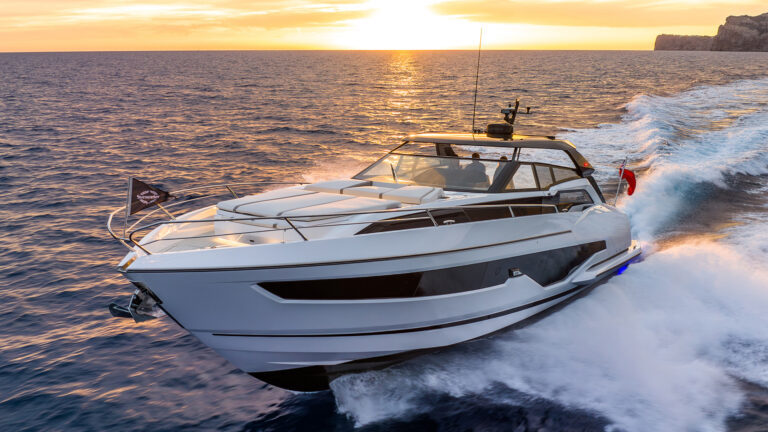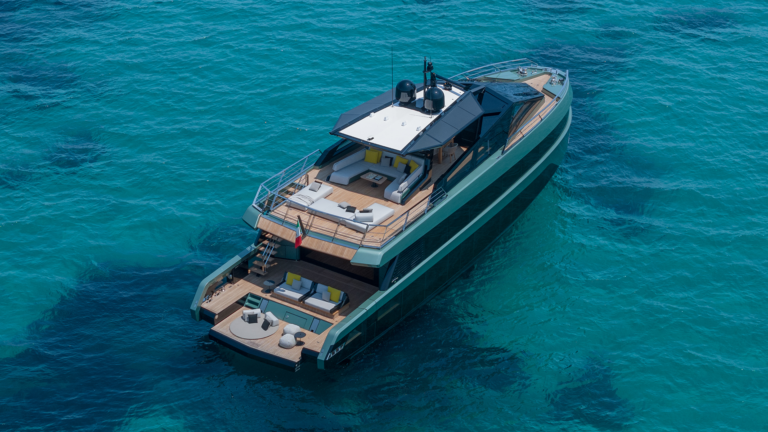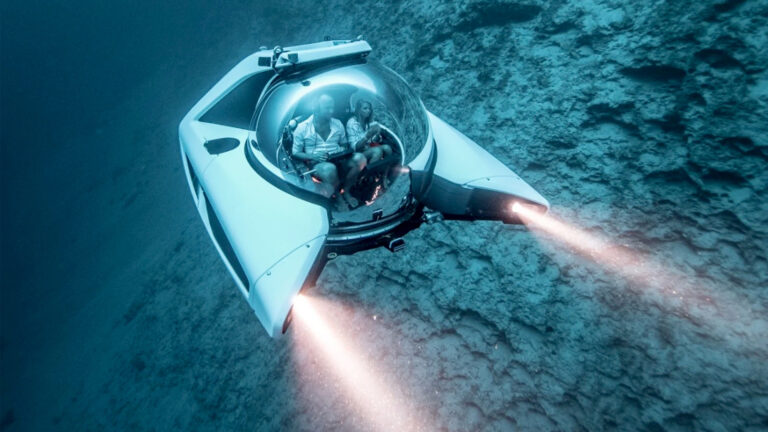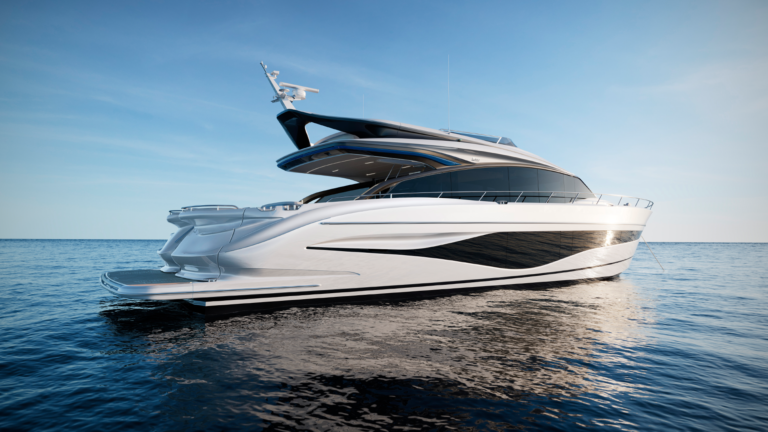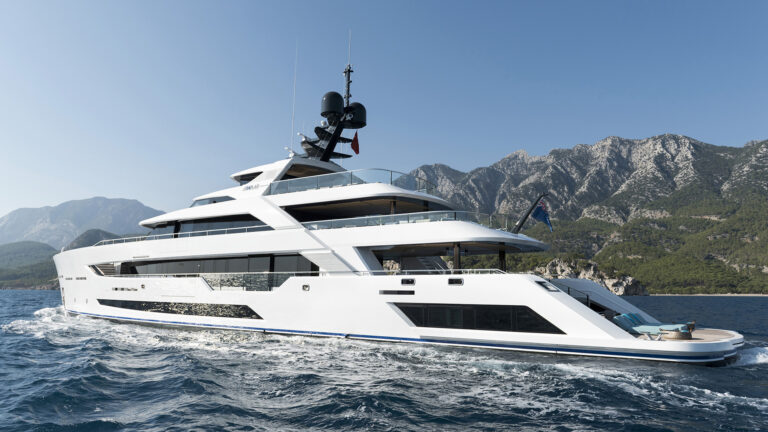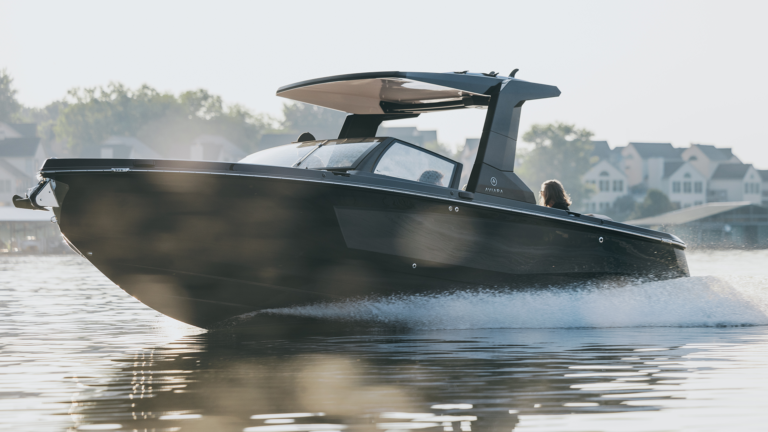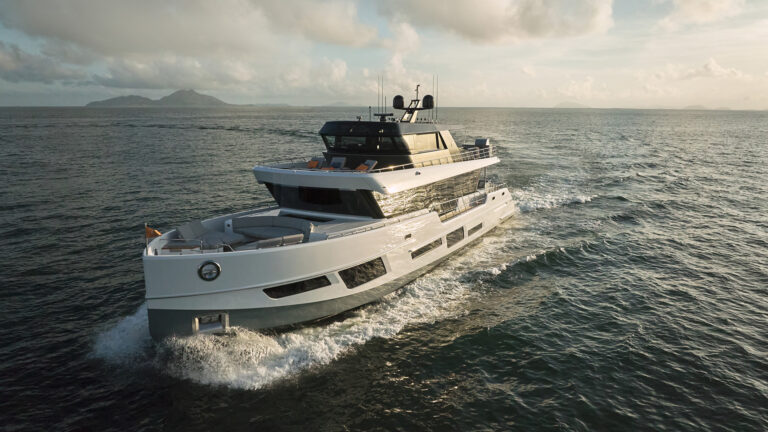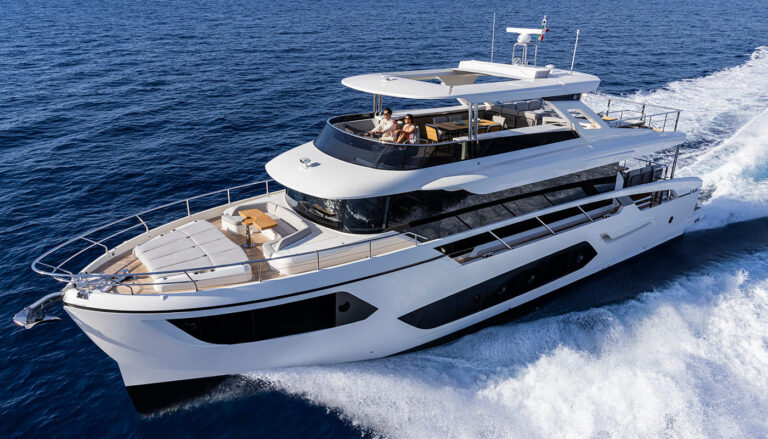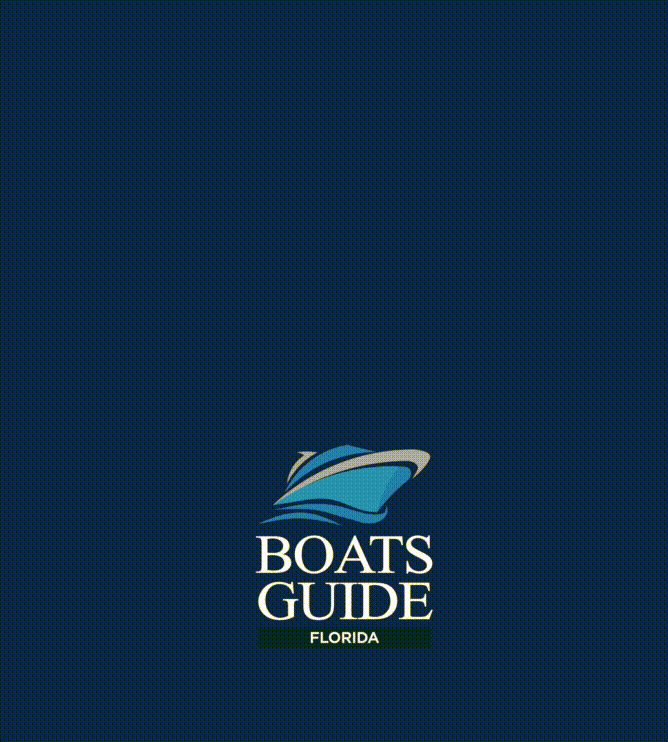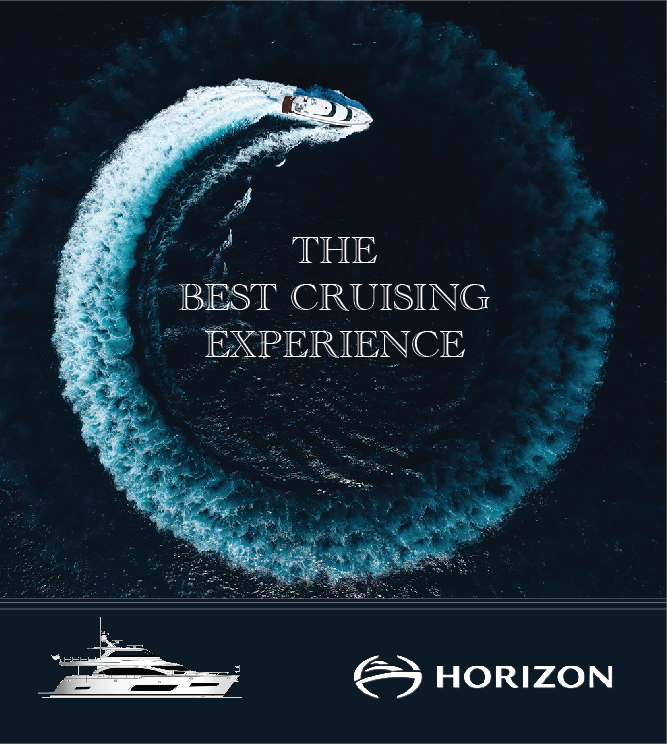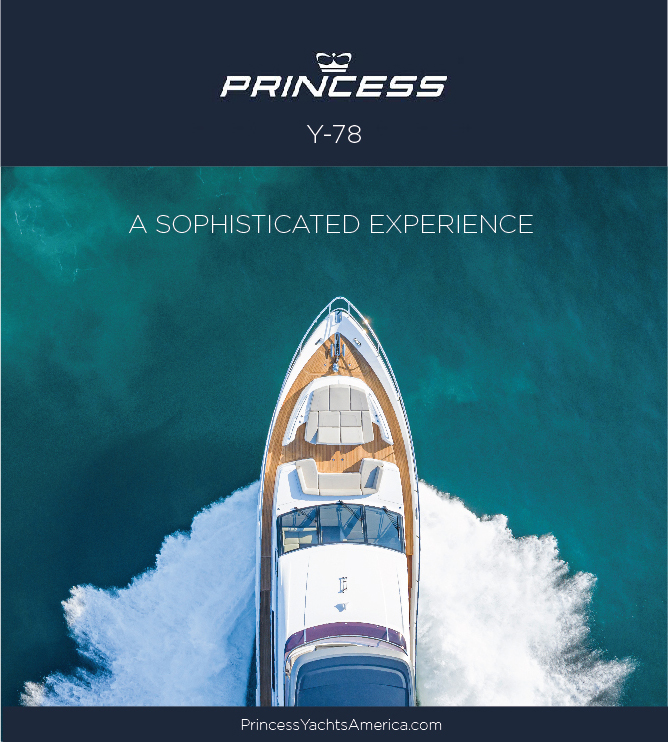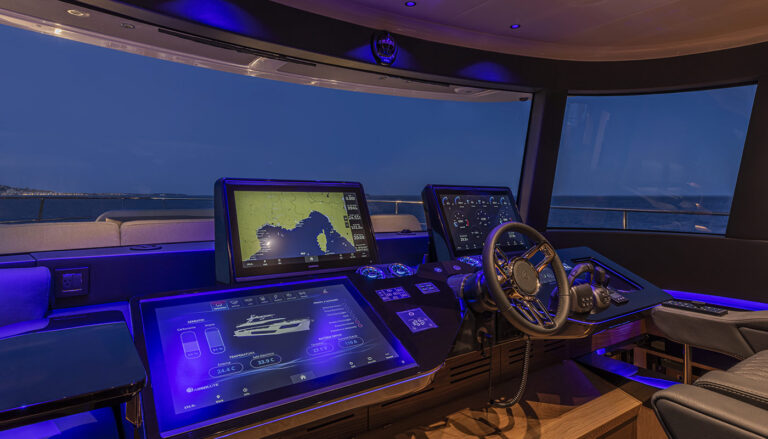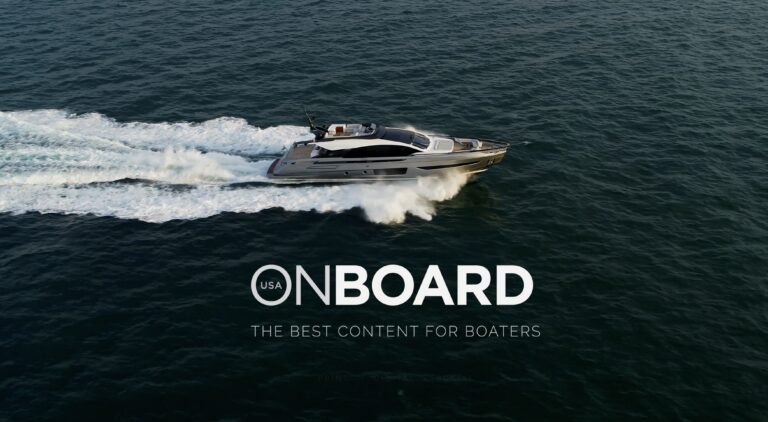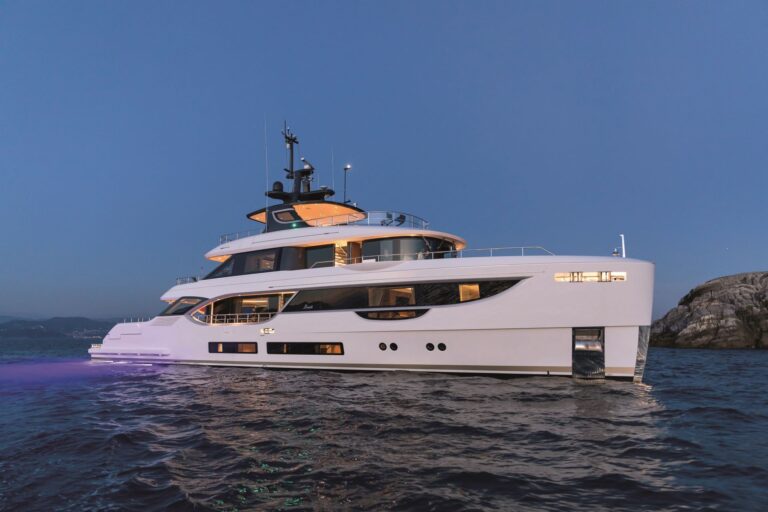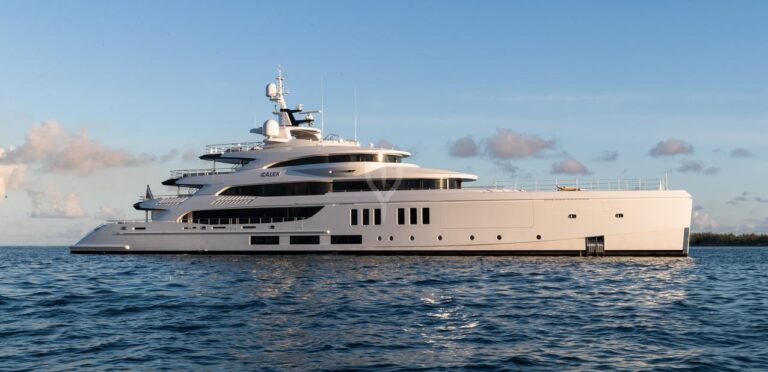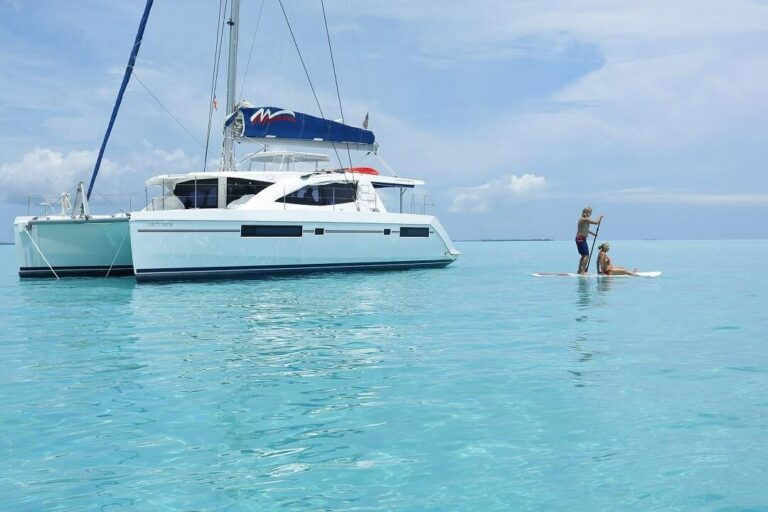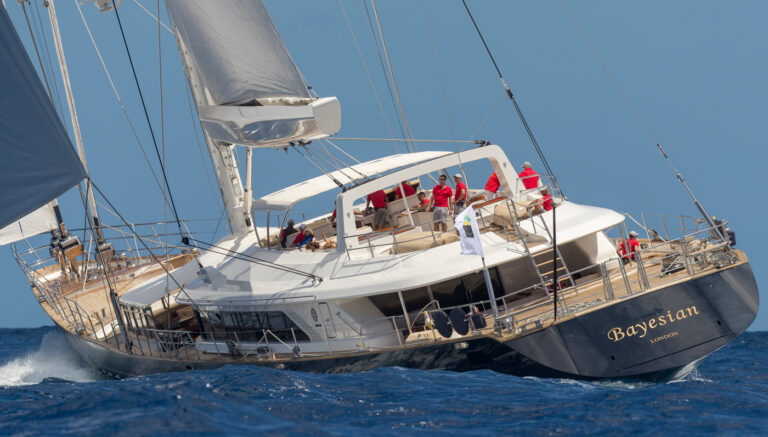In recent years, the “Sport” versions of yachts have gained a lot of ground in buyers’ preferences. These models are mostly perceived as more beautiful and sporty than the flybridge versions. But at the same time that these sports yachts advanced in consumer preference, flybridge yachts have evolved remarkably in the performance of that elevated space. Today they are functional, recreational places and provide better visibility, facilitating docking maneuvers in the adverse wind and current conditions, mainly in confined spaces.
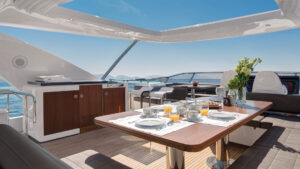
Driving a boat from the flybridge in nice weather is an exclusive experience. For the views, for the feeling of freedom, for the breeze, and for the extraordinary comfort that the most current versions provide. Gone are the days of
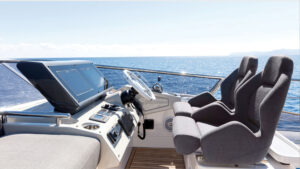
a flybridge inhabited alone by the captain. Today, the flybridge has large spaces for sunbathing, a place to have lunch during the crossing, a grill, refrigerator, and other amenities that make it a sophisticated social space for entertaining and al fresco dining.
On a beautiful day, nothing beats sailing from above. On a stormy day, nothing is worse.
Operating the boat while inside and protected, or outside when the time is right, is the main draw of a flybridge yacht. So if you can have the best of both worlds, why would anyone choose just an inside wheelhouse? It is not so simple.
Leaving aside for a moment the exterior aesthetics of each other (although it is not a minor detail), the buyer must consider different factors of a flybridge. The weight of the boat is one of them. And the direct consequence is a decrease in the speed of the ship and an increase in fuel consumption. How many? Again, it depends on the length of the boat, the size of the flybridge, the equipment that makes it up, the weight-power ratio of the engines, etc. But one thing is true. A Sport Yacht always delivers more efficient performance than a model with a flybridge.
Another factor is that a flybridge increases wind resistance. The boat is taller, with a higher center of gravity, and this can – in crosswinds – increase the drag, increasing the complexity of a docking maneuver.
Another point of importance in the decision is subject to small children on board. The captain has more wide visual control of the entire ship from the inner wheelhouse. In some cases, access to the flybridge is located inside the yacht, which guarantees that children can only go outside – with the cockpit door closed – through the flybridge where their parents are, which solves this problem.
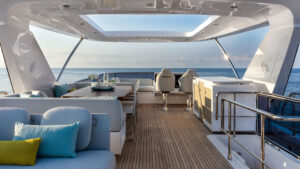
Even without children on board, the captain may feel less connected to crew members and guests, causing some anxiety, although today’s portable family channel radios and intercom systems help bond the captain, crew, and guests. In addition, the use of video cameras that show what is happening on the ship, from the bow to the stern, from the engine room to the galley, also helps the captain know what is happening in real-time. Video feeds are easily displayed on the flybridge wheelhouse multifunction display.
Another aspect to consider is the increase in the height of the boat. If the area you navigate is overcrowded with low-height bridges that require opening for crossing, it can mean interrupted and tedious navigation.
The flybridge is accessed by stairs. Depending on the models, a greater or lesser degree of inclination always implies an effort for the elderly or those with some physical disability.
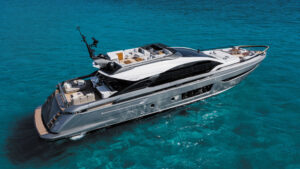
Most of the disadvantages that a flybridge could potentially have been eliminated by opting to use the inner wheelhouse of a dual command boat when conditions call for it. Regarding benefits and strictly practical terms, the visibility and sense of control of the boat that the flybridge provides are second to none. Regarding their contribution to habitability and comfort, currently, the flybridge offers generous spaces for sunbathing, large sofas, grill, bar with sink, refrigerator, and a dining room for between 8 and 12 people, depending on the length of the yacht.
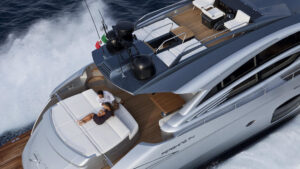
In summary, having both options seems to be a good choice depending on how much use you could put the flybridge too. If your cruising area is the southeastern United States with the Bahamas within easy reach and a warm climate for eight or nine months of the year, then the flybridge is for you. On the other hand, if its geography is more similar to Alaska, surely the flybridge does not make any sense. Your case is indeed between these extremes. So with this information, you can imagine how much use you would give a flybridge and thus decide if it is worth it.
Alex Gasquet. © UsaOnboard 2022

